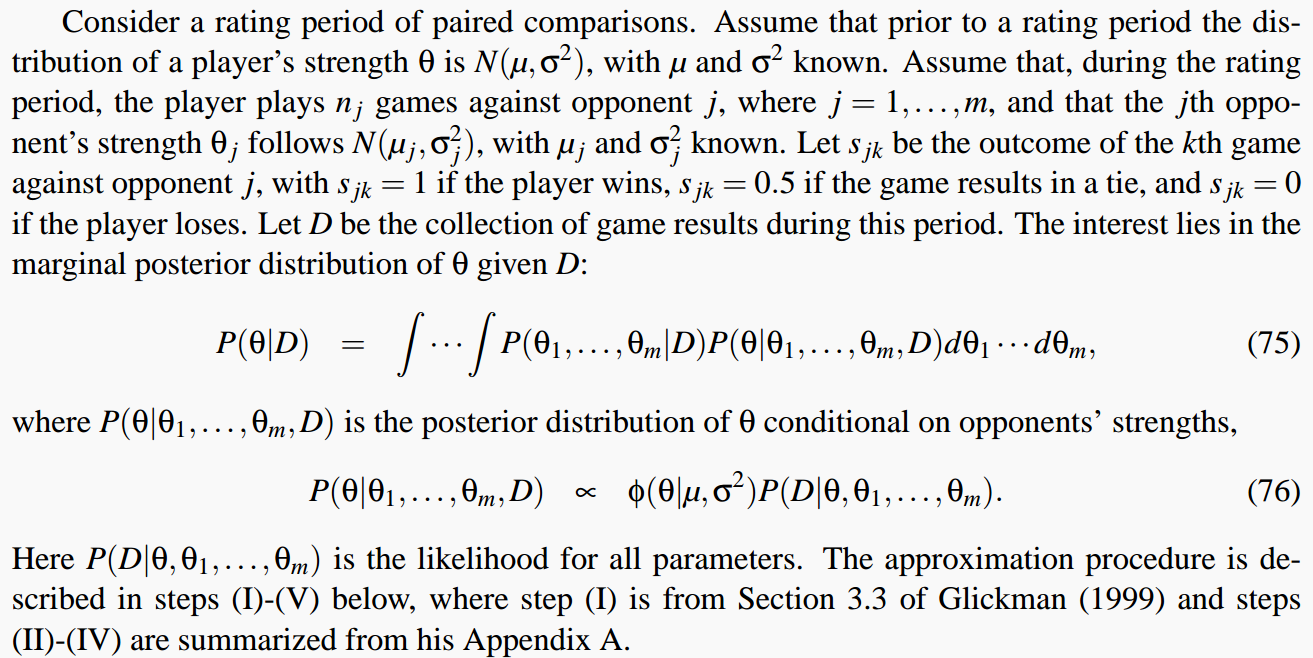This weekend I just read again the Glicko skill rating paper [1] but I found something not very clear in the paper. I’d like to make some notes, some based on my guesses. Hope I’d sort them out completely in the future.
First, Glicko models game outcomes by the Bradley-Terry model, meaning that the win probability of a player is determined by his skill proportional to the sum of both players’ skills (assuming a one-vs-one game).

Here, a player skill is an exponential form of a strength parameter $latex \theta$ which follows a normal distribution:

Glicko updates a player’s skill in a rating period, in which other opponents’ skills are assumed as constants during the rating period. Thus, the posterior distribution of the player’s skill after observing the game outcomes in the rating period is:

The confusing part to me is the notation $latex L(\theta, \theta_1, \cdots, \theta_m|\textbf{s})$. In my opinion, $latex L(\theta, \theta_1, \cdots, \theta_m|\textbf{s}) = f(\textbf{s}|\theta, \theta_1, \cdots, \theta_m)$. My opinion reconciles with what is described in [2]:

References
[1] Parameter estimation in large dynamic paired comparison experiments
[2] A Bayesian Approximation Method for Online Ranking